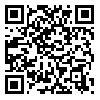Volume 15, Issue 2 (March & April 2024)
BCN 2024, 15(2): 133-146 |
Back to browse issues page
Download citation:
BibTeX | RIS | EndNote | Medlars | ProCite | Reference Manager | RefWorks
Send citation to:



BibTeX | RIS | EndNote | Medlars | ProCite | Reference Manager | RefWorks
Send citation to:
Mirmohamadi S, Norozpour Y, Zarrabian S. A Review of Binaural Beats and the Brain. BCN 2024; 15 (2) :133-146
URL: http://bcn.iums.ac.ir/article-1-2444-en.html
URL: http://bcn.iums.ac.ir/article-1-2444-en.html
1- Faculty of Medicine, Tehran Medical Sciences Branch, Islamic Azad University, Tehran, Iran.
2- Institute for Cognitive Science Studies (ICSS), Tehran, Iran.
3- Department of Anatomical Sciences & Cognitive Neuroscience, Faculty of Medicine, Tehran Medical Sciences Branch, Islamic Azad University, Tehran, Iran.
2- Institute for Cognitive Science Studies (ICSS), Tehran, Iran.
3- Department of Anatomical Sciences & Cognitive Neuroscience, Faculty of Medicine, Tehran Medical Sciences Branch, Islamic Azad University, Tehran, Iran.
Abstract:
Binaural beat (BB), as a non-invasive auditory beat stimulation type, has found its potential applications in cognitive domains. This review presents a proper summary to deepen our understanding of the soundness of the BB technique by looking into its applications, possible mechanisms of action, effectiveness, limitations, and potential side effects. BB has been claimed to improve cognitive and psychological functions such as memory, attention, stress, anxiety, motivation, and confidence. We have also looked into preclinical and clinical research studies that have been performed using BB and proposed changes in the brain following the application of BB stimulations, including EEG changes. This review also presents applications outside the cognitive domain and evaluates BB as a possible treatment method.
Keywords: Auditory beat stimulation, Binaural beat, Monaural beat, Cognitive functions, Psychological effects
Type of Study: Review |
Subject:
Behavioral Neuroscience
Received: 2022/03/18 | Accepted: 2022/06/29 | Published: 2024/03/1
Received: 2022/03/18 | Accepted: 2022/06/29 | Published: 2024/03/1
Send email to the article author
| Rights and permissions | |
 |
This work is licensed under a Creative Commons Attribution-NonCommercial 4.0 International License. |








